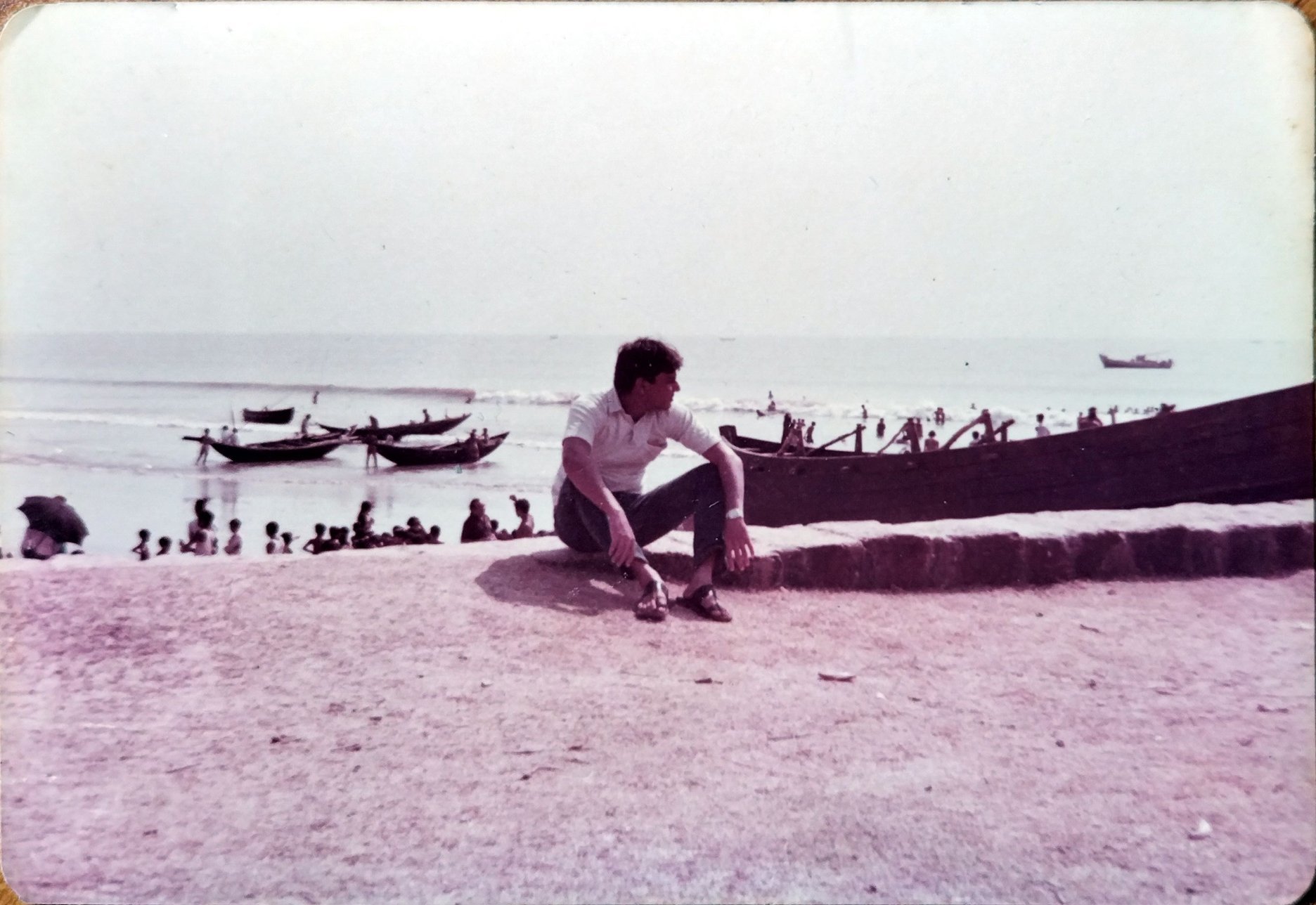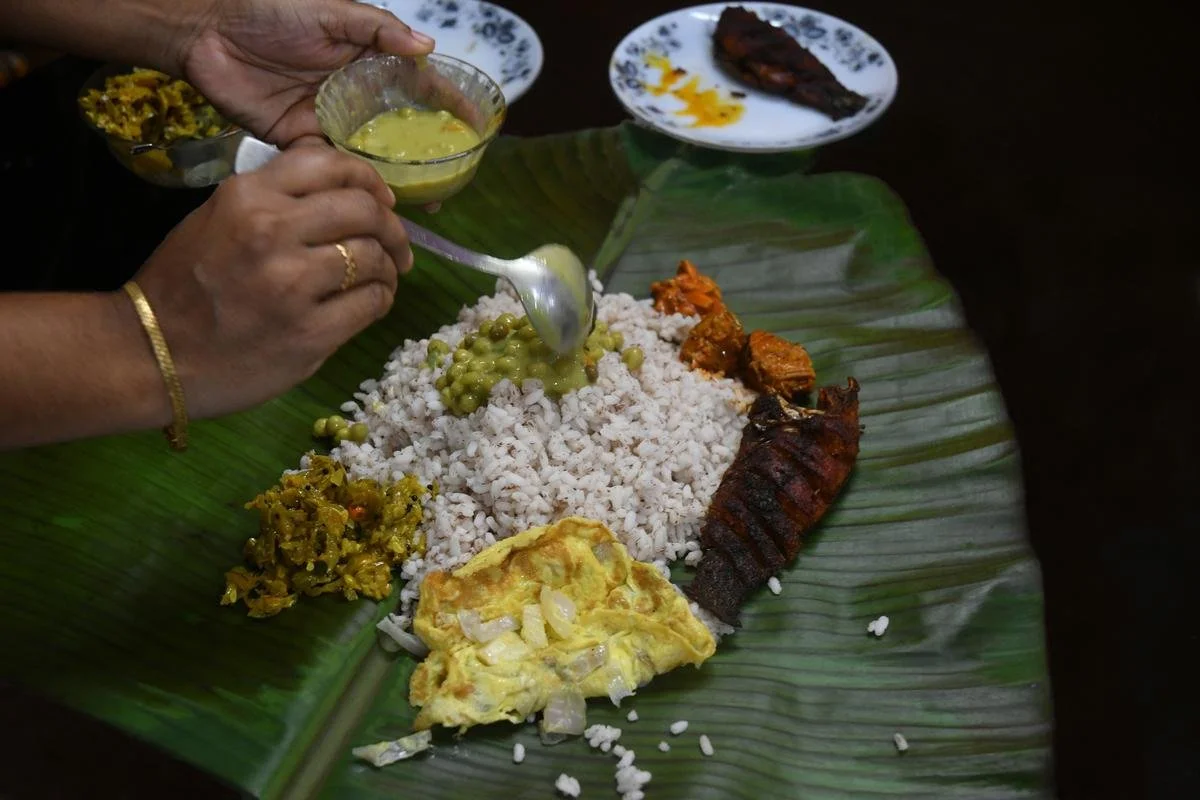A Mangalorean Jackfruit Cake

These sweet, dense cakes are a great breakfast snack, or perfect to mop up a plate of spicy kori gassi, or even with just coconut oil and ghee. Parinita Salian Crasta shares her family recipe for her pelakai da gatti, ripe jackfruit cakes steamed in teak leaves.
Gattis are a cherished tea-time snack in our Mangalorean home.
To me, they evoke lazy summer evenings in the chavadi (courtyard) of my grandparent's home, where a huge pot of cha is served with pelakai de gatti, steamed jackfruit cakes.
It is a deeply beloved dish, eaten through the summer and early monsoons, when ripe jackfruit is available.
The unique aspect of this steamed cake is that we use teak leaves (thekki da ire) to wrap and steam the batter. My grandma explained that teak leaves balance the ‘nanji’ or overripe flavours of jackfruit; we add crushed peppercorn for the same reason. Some even add a pinch of turmeric.
Mangalorean homes prepare this dish in a few different ways: some sweeten it with jaggery, like us, and eat it as a sweet breakfast or tea snack. Others skip the jaggery, and pair it with kori gassi (Mangalorean chicken curry) or just some coconut oil or ghee. My Mangalore-Catholic mother-in-law stuffs it with bella-tarai, or jaggery-coconut. Whatever the version, teak leaves are the unifying factor. When teak leaves (thekki da ire) aren't available, we substitute with banana leaves. I sometimes cheat with parchment paper or idli moulds.
Gattis and Addes are umbrella terms in Tulu for steamed, dense delicacies. Under this umbrella, there are many cultural variants —the Goan patoli called manjal ireda gatti/adde, steamed in manjal ire or turmeric leaves. Or if the patoli is steamed in banana leaves, it is called bareda ireda gatti.
While the pelakai da gatti is under this same umbrella, we do not stuff it with coconut and jaggery. Instead, we grind it with other ingredients; but ripe jackfruit is the hero of the dish.
I learned to make this from mom, Nishi Salian, and grandma, Krishnabai Bangera. We love making it at home in Mumbai, a memory of summer in Mangalore. And when we are in our Mangalore home, we order the gattis from Sri Ram Bhavan, because they make it just the way we do.
RECIPE FOR PELAKAI DA GATTI
Makes around 15- 20 medium sized gattis
Ingredients
1.5 cups ripe jackfruit
1 cup grated coconut
1 cup parboiled or matta rice (soaked for 6 hours)
1/2 cup idli rice (soaked for 6 hours)
3/4 cup jaggery (tweak this depending on how sweet the jackfruit is)
A handful of chopped coconut bits
4-5 pods of cardamom
8-10 peppercorns
Salt, to taste
15-20 teak leaves
Method
Wash the teak leaves and dry them well. Use young leaves as they are easier to fold, and leave a deeper orange stain than mature leaves. If substituting with banana leaves, wilt them gently over a flame.
Grind the jackfruit, coconut. soaked rice, jaggery, half the peppercorns, salt and cardamom in batches to form a semi-coarse paste. Add very little water while grinding.
Crush the remaining peppercorns roughly and add to the batter along with chopped coconut bits. You can fry the coconut bits in ghee, or add it straight to the ground mix. Mix well.
Fill a steamer with enough water to last 45 minutes.
Pour the thick batter in the middle of the teak leaf on the darker green/front side of the leaf. Fold from all sides.
Stack these folded parcels in the steamer. It takes 45 mins to an hour to cook.
Allow to come to lukewarm temperature before unwraping. Slice and serve.
Parinita Salian Crasta is a Mumbaikar with a Mangalorean heart, passionate about archiving and documenting cherished family recipes. Follow her on @parinita.s
ALSO ON GOYA











